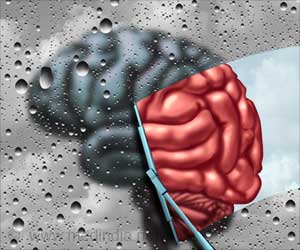Researchers have been able to identify neural signatures of effective, real-time coordination between people to actually record, measure and analyze both behavior and brain activity.
Researchers have been able to identify neural signatures of effective, real-time coordination between people to actually record, measure and analyze both behavior and brain activity simultaneously in two interacting humans.
Researchers used a specially designed dual-electroencephalogram (EEG) and the conceptual framework and methods of coordination dynamics in this study, “The Phi Complex as a Neuromarker of Human Social Coordination,” published in the May 8, 2007 Proceedings of the National Academy of Sciences. The research was conducted by Drs. Emmanuelle Tognoli, Julien Lagarde, Gonzalo DeGuzman and J.A. Scott Kelso in The Human Brain and Behavior Laboratory at the Center for Complex Systems and Brain Sciences in the Charles E. Schmidt College of Science at FAU.Using EEG recordings, Tognoli and colleagues collected the brain activity of two people simultaneously performing continuous finger motion. At first, the two subjects were asked to wag their fingers but were not allowed to see each others’ hands. Then, like the shutter release of a camera, the barrier placed between them was removed so they could see each other as they continued to wag their fingers. When subjects were allowed to see each others’ fingers moving, sometimes they adjusted their own movements and synchronized with each other, and sometimes they did not, behaving independently.
“While many interactions between people rely on mutual information exchange, little is known about how such social processes are integrated in the brain,” said Kelso, the Glenwood and Martha Creech Eminent Scholar in Science and founder of the Center for Complex Systems and Brain Sciences. “What this research suggests is that a unique pattern can be seen in the brains of two people interacting and that these brain activities distinguish independence from cooperation. This new brain rhythm that we have discovered and termed the ‘phi complex’ actually distinguishes when you’re socially interacting and when you’re not.”
Phi is one of a number of brain rhythms that exist in the awake human brain and appears to have a social function. Rhythms or oscillations are the natural language of the brain. They are the signature of the underlying cortical networks and are characterized by their frequency, strength and location. “Phi” operates in the 10 Hz band (10 oscillations per second) and is located above the right centro-parietal cortex. It consists of two components: one favors independent behavior and the other favors interpersonal coordination between people.
“The phi complex is closely tied to the success of the mutual interaction between people and is not merely a consequence of one person imitating the other,” said Tognoli. “Our measure of behavior, the phase or timing relationship between the actions of two people, is important because it characterizes the informational exchange between their brains.”
The success or failure of this information exchange revealed in this new brain rhythm will serve as a stimulus for the scientific community to further investigate the phi complex and its implications for understanding not only normal social cognition, but pathologies of social behavior.
Advertisement
The phi complex may prove to be a sensitive probe or neuromarker of neuropsychiatric disorders such as autism and schizophrenia where the inability to have harmonious social interactions is problematic. In addition, this research opens up many new and untapped possibilities to identify the neural mechanisms of real-time social behavior between humans such as leader-follower, male-female and enemy-friend relationships.
Source-Newswise
SRM











